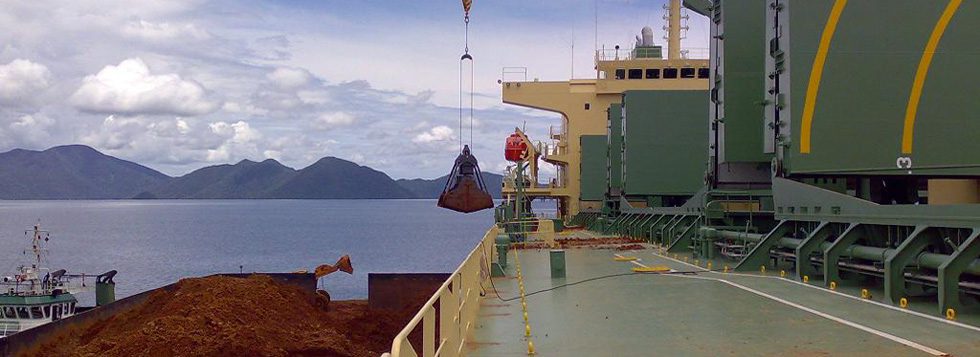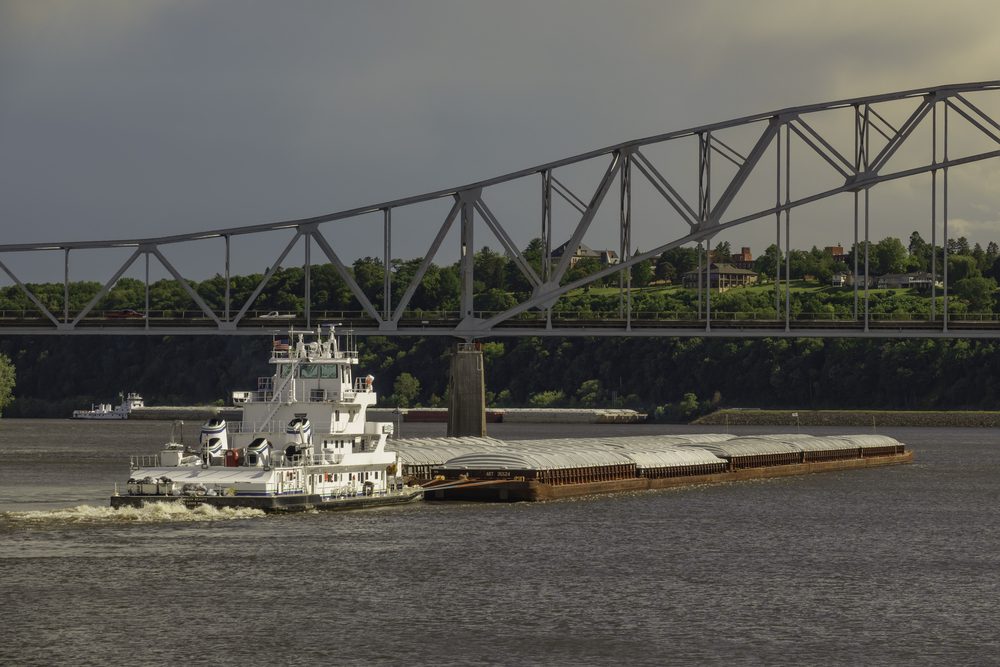Loading nickel ore in Pomalaa, Indonesia. Image (c) PT. Mari Inti Karsa
Jan. 13 (Bloomberg) — The ban on mineral-ore exports from Indonesia, the world’s biggest nickel producer, is poised to benefit neighboring miners in the Philippines, who are predicting an increase in sales.
The ban is positive as demand and prices for Philippine supplies will increase, according to Emmanuel Samson, chief financial officer at Nickel Asia Corp. The Taguig City-based company accounts for about a third of Philippine output, Samson said in a telephone interview.
While the Indonesian ban is intended to help increase the value of commodity shipments from Southeast’s Asia’s largest economy, the curbs may hand an advantage to rival producers such as Nickel Asia. As buyers in China, the top user, have stocked up on ore ahead of the curbs, it may take as long as six months for that extra inventory to be used, according to Samson. Producers in China also need to adjust to the lower grade of ore that comes from the Philippines, he said.
“If they do that, it would be very easy for us to ramp up production,” said Samson. “We think the increase is not going to be until such time that the inventory level will come down,” he said, referring to prices.
Refined-nickel futures jumped 3.3 percent on the London Metal Exchange on Jan. 10 to close at $13,860 a ton ahead of the ban. The price may average $15,500 this year, according to an ABN Amro Bank NV report on Jan. 3 that cited the curbs in Indonesia and improved demand for the metal on the global economic recovery. Last year’s average was $15,081.
Shares Rally
Nickel Asia shares rallied 5.1 percent last week, valuing the company at 40.5 billion pesos ($905 million). Sumitomo Metal Mining Co., Japan’s biggest nickel producer, owns 26 percent of the stock, according to data compiled by Bloomberg. Net profit was 1.1 billion pesos in the third quarter of 2013, 14 percent higher than a year earlier.
Indonesia and the Philippines were the two largest mined- nickel producers in 2012, accounting for a combined 38 percent of the supply of the metal used in stainless steel, data from the International Nickel Study Group show. The Philippine ore grade is between 1 percent and 1.8 percent, lower than Indonesia’s, said Samson. Only about 10 percent of the company’s total production has 1.8 percent grade, he said.
Read: Nickel Ore – Russian Roulette at Sea
Nickel Asia shipped about half of its 14 million wet metric tons output to China in 2013, said Samson. Output may rise 15 percent this year, helped by full-year production from a second processing plant. The estimate for 2014 doesn’t yet factor in the impact of the Indonesia ban, he said.
Buy Call
The company has reserves of more than 355 million wet metric tons at a grade of 1.28 percent, said Ramon Adviento, an analyst at Maybank ATR Kim Eng Securities. Nickel Asia’s pay factor — the amount of metal content paid by buyers and which is correlated to metal recovery — is 15 percent, while Indonesian companies get as much as 25 percent, he said.
“Should the Indonesian ban take effect, Philippine producers would look to renegotiate the pay factor,” said Adviento, who has a buy rating on the stock. “If successfully taken to Indonesia’s level, the increase would potentially affect around 40 percent of production.”
Citigroup Inc. is among those saying that Philippine producers may struggle to step into the breach left by Indonesian rivals, citing the difference in ore grades, according to a report on Nov. 18. Using Philippine ore at 1.5 percent metal instead of Indonesian ore of 1.8 percent would mean producers in China would have to process 30 percent more material to make the same amount of nickel pig iron, Citigroup said. That could raise costs as much as $4,000 a ton, it said.
Increase Investment
Indonesia’s curbs are meant to promote processing, increase investment and spur output of higher-value products. Nickel ore production may drop to 9 million tons this year, the Energy and Mineral Resources Ministry forecast Dec. 27. That compares with 47 million tons in the first 11 months of last year.
The ban won’t affect PT Vale Indonesia as the country’s largest producer processes all its ore into nickel-in-matte, which has 78 percent purity, according to President Director Nico Kanter. The Jakarta-based company sold 58,621 tons in the first nine months of 2013, up from 50,611 tons a year earlier, according to a statement on its website.
“I don’t see the Philippines will benefit from the ban,” Kanter said in a Jan. 9 telephone interview. “Indonesian nickel has higher grades than the Philippines’. They cannot substitute supplies from Indonesia.”
Mainland Stockpiles
Chinese stockpiles of ore are large enough to sustain the output of nickel pig iron through until at least the final quarter of this year, RBC Capital Markets said in a report on Dec. 19, citing an estimate from researcher Wood Mackenzie. Nickel pig iron is a lower-grade substitute for refined metal.
The refined-nickel market is in surplus, with stockpiles held in LME-registered warehouses near a record. Global supply will outstrip demand by 30,400 tons in 2014 after a surplus of 75,600 tons last year, according to Citigroup. LME-tracked reserves stood at 261,906 tons on Jan. 10, about 81 percent higher than a year earlier, bourse data show.
Indonesian officials confirmed the buildup of ores in the world’s second-largest economy last week, while pledging to implement the ban.
“I just returned from China and I saw with my own eyes there’re 3 million tons of bauxite and 20 million tons of nickel ore there,” Industry Minister M.S. Hidayat told reporters in Jakarta on Jan. 8. “That’s what we want to stop.”
– Cecilia Yap, Copyright 2014 Bloomberg.

 Join The Club
Join The Club











